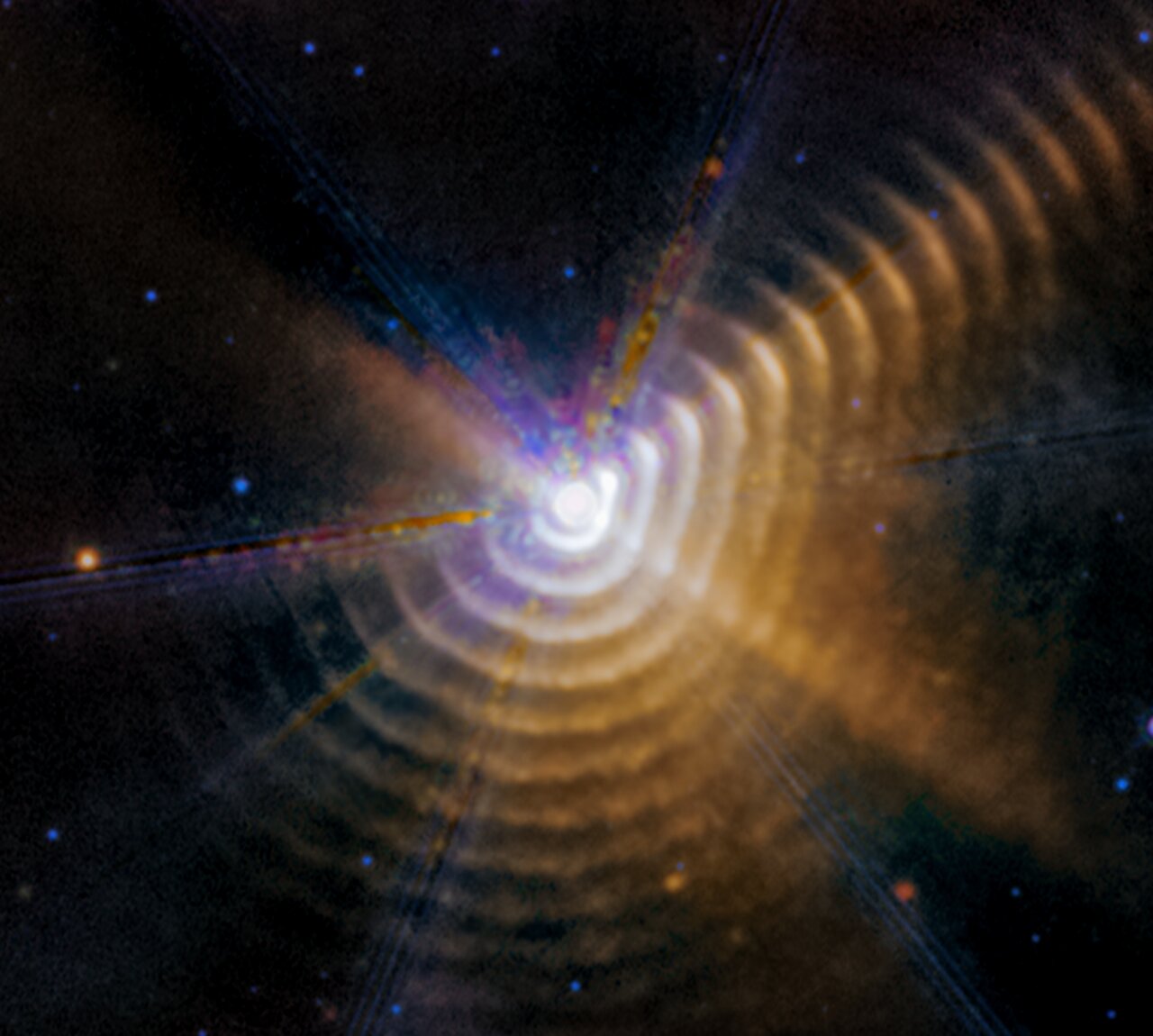Coordinates
| Position (RA): | 20 20 28.09 |
|---|---|
| Position (Dec): | 43° 51' 16.81" |
| Field of view: | 0.95 x 0.85 arcminutes |
| Orientation: | North is 86.7° left of vertical |
Colours & filters
| Band | Wavelength | Telescope |
|---|---|---|
| Infrared | 7.7 μm | James Webb Space Telescope MIRI |
| Infrared | 15 μm | James Webb Space Telescope MIRI |
| Infrared | 21 μm | James Webb Space Telescope MIRI |
Wolf-Rayet 140 (MIRI image) - September 2023
Astronomers using the NASA/ESA/CSA James Webb Space Telescope James Webb Space Telescope have identified two stars responsible for generating carbon-rich dust a mere 5000 light-years away in our own Milky Way galaxy. As the massive stars in Wolf-Rayet 140 swing past one another on their elongated orbits, their winds collide and produce the carbon-rich dust. For a few months every eight years, the stars form a new shell of dust that expands outward — and may eventually go on to become part of stars that form elsewhere in our galaxy.
Every shell is racing away from the stars at more than 2600 kilometers per second, almost 1% the speed of light.
Wolf-Rayet 140 lies just over 5000 light-years away in our Milky Way galaxy.
[Image description: The image shows a bright white point of light surrounded by 17 regularly spaced, hazy dust shells at the bottom, right, and upper right, which look like tree rings. There is noticeably less color in the upper left. The central point, where the two stars are located, has a roughly hexagonal shape.]
Credit:NASA, ESA, CSA, STScI, E. Lieb (University of Denver), R. Lau (NSF NOIRLab), J. Hoffman (University of Denver)
About the Image
| Id: | weic2501d | |
|---|---|---|
| Type: | Observation | |
| Release date: | 13 January 2025, 20:15 | |
| Related releases: | weic2501 | |
| Size: | 1093 x 982 px | |




